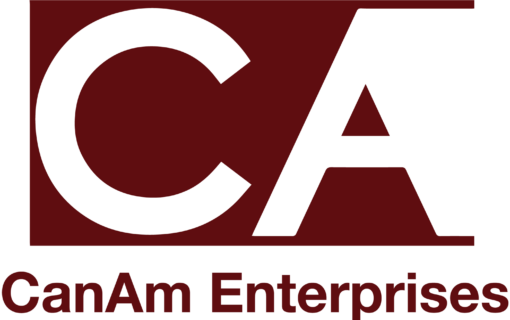Author: Gaurav Sharma
To know how to overcome the challenges and way to get an EB-5 visa easily, TechGig spoke with Peter Calabrese — CEO of CanAm Investor Services, a leading EB-5 regional centre operator.
The recent layoffs in the tech sector have left many skilled foreign workers who were previously dependent on the H-1B program anxious about their stay in the US. According to a report, over 216,000 tech employees have been laid off since the start of 2022.
Now to overcome these challenges, H-1B visa holders are shifting their interest to the EB-5 visa to obtain permanent residency status for themselves and their families but still, there are confusions that investors are facing. To know how to overcome the challenges and way to get an EB-5 visa easily, TechGig spoke with Peter Calabrese — CEO of CanAm Investor Services, a leading EB-5 regional centre operator.
1. What are the Top 5 countries you would suggest for Indian techies?
What we can say is that the US remains a powerhouse of tech employment and tech business startups for Indians. According to U.S. Census information, one in every ten tech workers in Silicon Valley is of Indian origin and one in every three start-ups has an Indian co-founder. For these and other reasons, Indians with tech backgrounds chose America to further their careers, and many chose the EB-5 program as their immigration visa option.
2. What are the challenges faced by entrepreneurs while setting up business in India vs the US?
I cannot speak with authority about what challenges entrepreneurs experience when trying to set up their own businesses in India. Anecdotally, CanAm investors from India have related challenges they’ve experienced in their home country with regulatory hurdles, taxation, and access to capital. The US is not without its own bureaucratic complexity, but Indians may find it offers a more streamlined business environment, access to a robust market, and a well-established entrepreneurial ecosystem. These qualities may make it comparatively easier for entrepreneurs to navigate these obstacles and set up their businesses.
3. What higher H-1B fees will mean for Indians hoping to work in the US, is eb-5 visa a better option
While H-1B has traditionally been the visa of choice for Indians seeking work opportunities in the U.S., times and circumstances have changed. The availability of H-1B visas is more limited than ever, with a high number of qualified applicants competing for a defined number of openings, resulting in a lottery system. Additionally, a proposed increase in H-1B application fees can be a new deterrent for both applicants and sponsoring employers. Considering these challenges, the EB-5 visa program offers an attractive alternative for Indians that allows them to live and work freely in the U.S. and secure path to a permanent green card. The program provides an opportunity to invest in U.S. projects that create U.S. jobs in return for the many benefits and freedoms that come with a U.S. green card for the investor and their qualifying family members.
4. Tips and tricks to get EB-5 easily?
An investor can apply for an EB-5 visa in two ways:
1) Investing in a direct EB-5 project, which involves starting his/her own business and hiring at least 10 full-time U.S., work-authorized employees; or
2) Investing in a Regional Centre-sponsored EB-5 project. Regional Centres are designated by USCIS to offer investors already-defined project investment opportunities. This option reduces the investors’ responsibility to identify acceptable investment vehicles that generate qualifying jobs. The minimum investment and job creation requirements are the same for both investment options. Overall, more than 90% of the EB-5 investors choose to invest with a Regional Centre.
The EB-5 Visa application consists of the following steps:
• Review the investor eligibility requirements under the EB-5 Program;
• Select an EB-5 Regional Centre-sponsored project and retain an experienced EB-5 immigration attorney. Keep in mind that selecting a project that meets the “rural project” USCIS requirements provides for priority EB-5 processing.
• Remit applicable funds, either $800,000 or $1,050,000 (based on current USCIS guidance) depending on the location of the project. If, for example, a project is in a Targeted Employment Areas (TEAs), it meets the minimum investment threshold of $800,000.
• Submit Form I-526E, Immigrant Petition by Alien Entrepreneur. Upon approval, prepare for adjustment of status if in the U.S. (or consular processing if abroad).
• Consular interview & conditional green card issuance.
5. Which is a better option and how? (Taking H-1b visa then covert to EB-5 or directly apply for EB-5 visa)
Deciding whether to pursue an H-1B visa and later convert to an EB-5 visa or directly apply for an EB-5 visa depends on individual circumstances and goals. Here are some considerations:
H-1B to EB-5: This approach involves initially obtaining an H-1B visa, which allows for a temporary stay in the country based on employment in the United States (non-immigrant visa). While on the H-1B visa, the individual can explore an EB-5 visa (immigrant visa). Should they meet all EB-5 eligibility criteria, applicants residing in the U.S. lawfully may concurrently file the EB-5 petition and adjustment of status while residing in the U.S.
The choice between the two options depends on factors such as personal preferences, financial considerations, and long-term immigration goals. It is essential to consult with immigration and investment professionals to evaluate individual circumstances and make an informed decision based on the specific situation.
CanAm Enterprises, with over three decades of experience promoting immigration-linked investments in the US and Canada, has a demonstrated track record of success. With over 60 financed projects and $3 billion in raised EB-5 investments, CanAm has earned a reputation for credibility and trust. To date, CanAm has repaid more than $2.26 billion in EB-5 capital from over 4,530 families. CanAm manages several USCIS-designated regional centers that stretch across multiple states. For more information, please visit www.canamenterprises.com.



